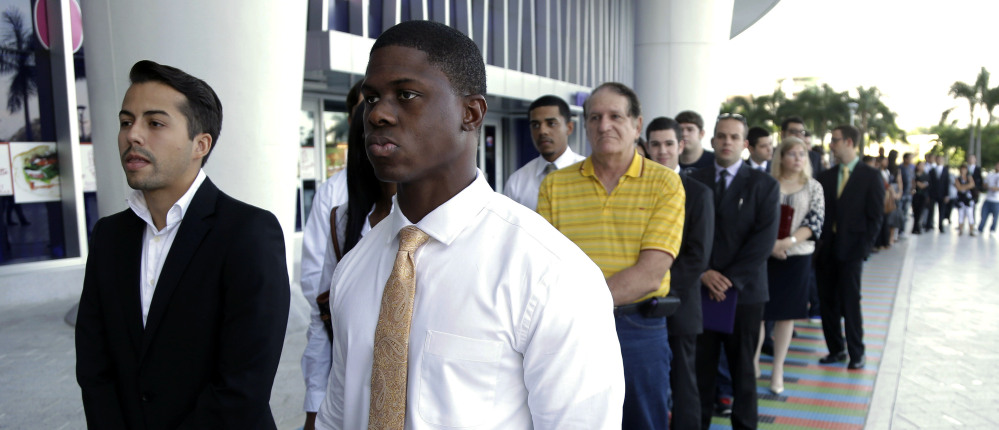The number of long-term unemployed – those out of a job for more than six months – may have dropped considerably since benefits were cut in December, but that doesn’t mean those people are all back at work.
In fact, it’s likely that very few found jobs in the intervening months. Instead, once the unemployment checks stopped, most of them either gave up looking for work or kept up an increasingly frustrating search that is stacked highly against them.
In either case, they continue to fall behind by the day, even as reasonable proposals to restore the benefits are ignored by House Republicans.
On Dec. 28, when the benefits, which extended unemployment insurance claims past 26 weeks, were allowed to lapse, it seemed likely that a compromise in Congress would soon have them reinstated. Seven months later, unfortunately, that hope is all but gone.
After much debate, the Senate passed a bill in April that would have extended long-term benefits through May and paid them retroactively back to December. House Speaker John Boehner, however, has not allowed the bill to get a floor vote.
The latest proposal – from the same Senate sponsors, Jack Reed, D-R.I., and Dean Heller, R-Nev. – has removed the retroactive stipulation, but it has stalled as well.
FIGURES DON’T OFFER FULL PICTURE
Meanwhile, opponents of an extension are pointing to a decline in long-term unemployment. In June, it dropped by 293,000 people from the previous month, and it is down 1.24 million, or 29 percent, in 2014.
That could mean that almost a third of the long-term unemployed suddenly found work after months and months of sending out resumes.
Or, more likely, it could mean that some found jobs, while more stopped looking at all, dropping them from inclusion in unemployment figures.
Two recent studies point to the latter. Alan Krueger, head of the White House Council of Economic Advisers from 2011 to 2013, found that of those who entered long-term unemployment during the 2008 recession, only 22 percent had found full-time, steady jobs by the first half of 2013. However, 35 percent had dropped out of the workforce, 28 percent had experienced spells of full-time or part-time work, and 14 percent were still looking.
That was a followup to prior research by Krueger that determined that only 11 percent of the long-term unemployed between 2008 and 2013 found steady employment within 16 months, with 34 percent dropping out of the workforce.
IMPACT OF RESUME GAP LINGERS
What’s more, the long-term unemployed will continue to face barriers to employment for the foreseeable future.
The longer the lapse on their resume, the harder it is to even get an interview, and when they do take a job, it is typically in a less-stable, and lower-paying, position.
The long-term unemployed are often out of work again within months of finding new work, and their long-term earnings are usually stunted for good.
So even as the economy improves for most, it does not for the long-term unemployed.
There remain 3.1 million people looking for work without the support of unemployment benefits. There are more who have exhausted all their employment options, found nothing and given up.
They are, in large part, not unskilled or lazy. In fact, most of the long-term unemployed have the same characteristics as many American workers, except that they had the poor fortune to lose their jobs during a historic economic downturn with an incredibly weak labor market.
Having them disengaged from the workforce accomplishes nothing. Restoring long-term unemployment benefits at least keeps people looking, and in the long term, that’s good for everyone.
Send questions/comments to the editors.


